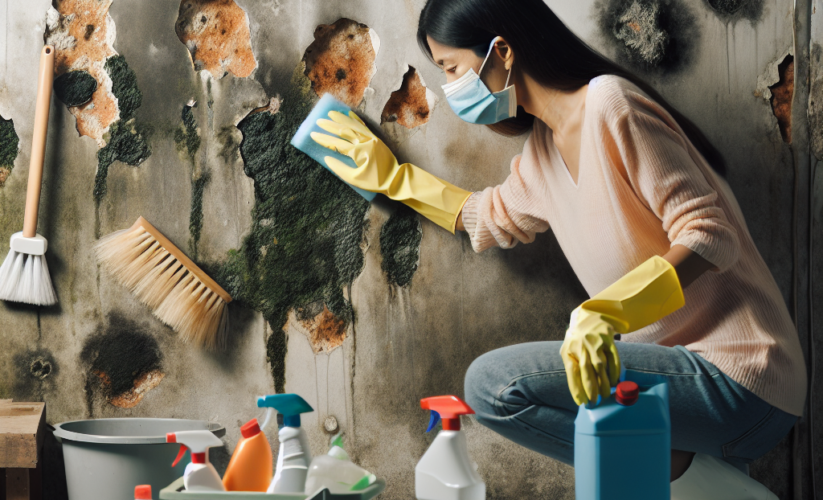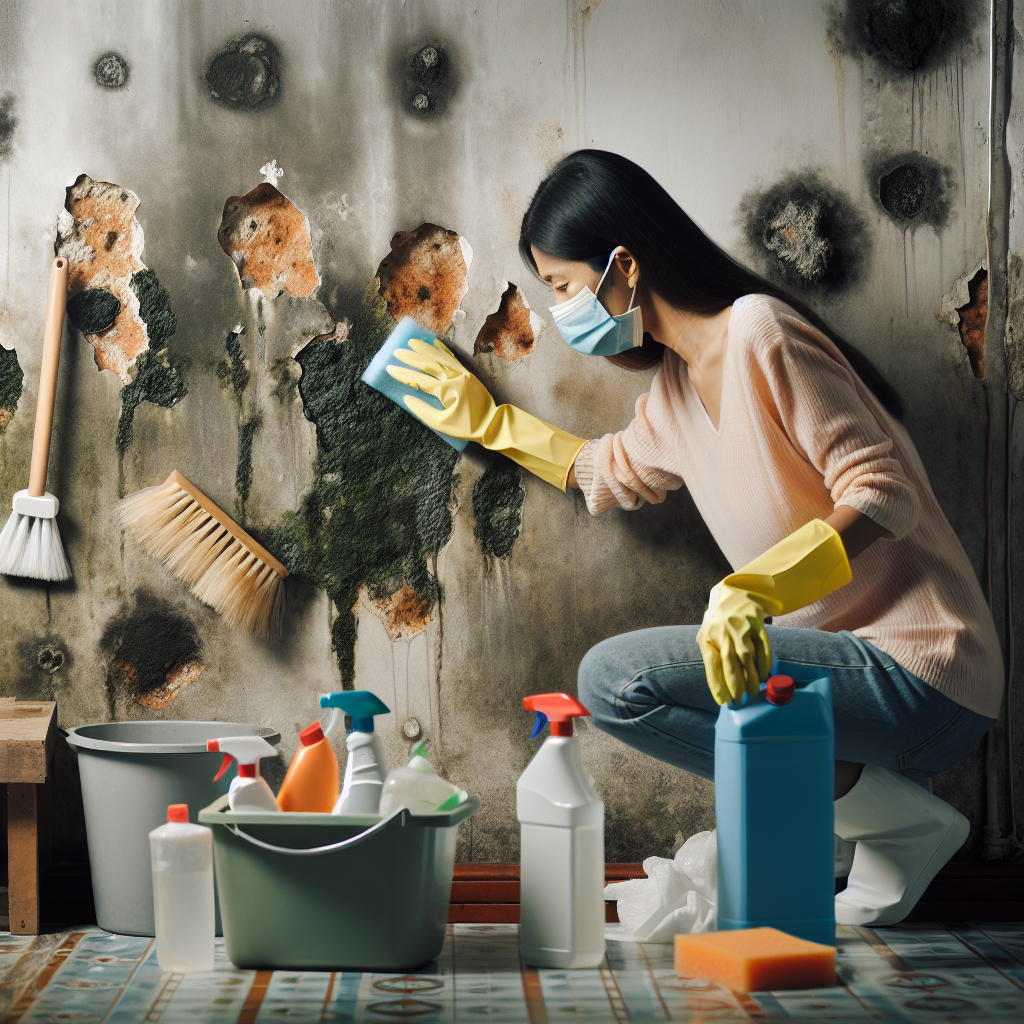
Essential Tips to Remove Schimmel von Wänden Quickly
Schimmel Wand: Understanding Mold Growth and Prevention
What is Schimmel Wand?
Schimmel wand, commonly known as wall mold, is a type of fungal growth that can appear on damp surfaces. It thrives in environments with high humidity and poor ventilation, making it a common issue in many households. Recognizing the signs of schimmel wand is critical for maintaining a healthy living environment. Not only does it affect the aesthetics of your walls, but it can also lead to health risks for inhabitants, particularly those with allergies or respiratory issues.
Causes of Schimmel Wand
Mold growth occurs due to a combination of moisture, nutrients, and appropriate temperatures. Common causes of schimmel wand include leaking pipes, water damage, and high humidity levels. Homes in coastal areas or those without adequate insulation are particularly susceptible to this issue. To effectively combat schimmel wand, it’s essential to identify its roots. Regular inspections and swift action upon finding sources of moisture can help prevent mold from taking hold.

Health Risks Associated with Schimmel Wand
The presence of schimmel wand can pose several health risks, particularly for individuals with preexisting conditions. Mold spores can trigger allergic reactions, asthma attacks, and other respiratory issues. Symptoms such as sneezing, coughing, and skin rashes often arise in response to inhaling or coming into contact with mold. It is crucial for households with children, elderly individuals, or anyone with a compromised immune system to ensure their living space is free from schimmel wand to promote overall health and wellness.
How to Identify Schimmel Wand
Detecting schimmel wand is essential for timely intervention. Visible mold growth can appear in various colors, including black, green, or white patches on walls, ceilings, and even furniture. Additionally, a damp, musty odor often accompanies these visual signs. Notably, schimmel wand may not always be visible; it can thrive behind wallpaper or within wall cavities. Conducting regular checks in humid areas like bathrooms and kitchens can help in early detection, preventing more extensive damage and health risks.
Visual Signs of Schimmel Wand
One of the most straightforward methods to identify schimmel wand is by observing visual indicators. As mentioned, mold can manifest as discolored patches on surfaces. It typically appears as spots that may grow larger over time if left untreated. A closer inspection may reveal the texture of the mold, which can be slimy or fuzzy, depending on its type. Moreover, inspecting corners, behind furniture, and beneath carpets can help uncover hidden infestations.

Smell and Sensation: Indicators of Hidden Mold
In addition to visual signs, schimmel wand frequently emits a distinctive musty odor. This smell is often one of the first indicators that mold is present, even if it’s not visible. Residents should take note of nasal irritation or coughing, which can signal mold exposure. Maintaining a well-ventilated home and using dehumidifiers can help reduce humidity and mitigate these warning signs. Regular environmental checks equip homeowners with the knowledge to address mold issues proactively.
Effective Prevention Strategies
Preventing schimmel wand requires a multifaceted approach, focusing on moisture control, proper ventilation, and regular maintenance. To significantly reduce the chances of mold growth, homeowners should make moisture management a priority. Keeping humidity levels under 50%, especially in vulnerable areas, is crucial. Installing exhaust fans in kitchens and bathrooms, using air conditioners, and ensuring drainage systems function properly can effectively manage indoor humidity levels.
Moisture Control in Your Home
To combat moisture, consider using moisture meters to monitor humidity levels throughout your home. Regularly checking for leaks in plumbing and roofs can safeguard against excessive moisture buildup. In areas prone to dampness, such as basements, applying waterproof sealants on surfaces can prevent water intrusion. These proactive measures significantly lower the risk of schimmel wand and keep your living environment healthy.

Ventilation and Airflow Management
Proper ventilation is paramount in preventing schimmel wand. Air circulation helps keep surfaces dry and inhibits mold growth. Opening windows, using fans, or installing HVAC systems can enhance airflow. Additionally, regularly cleaning air filters and vents promotes better air quality. Ensure that all attic and crawl space vents are clear and functional to prevent moisture buildup, ultimately reducing the likelihood of mold infestations.
Removing Schimmel Wand: Step-by-Step Guide
If you discover schimmel wand in your home, prompt action is essential for effective removal. Here’s a comprehensive guide to tackling mold on your walls safely and effectively:
Safety Precautions Before Removal
Before embarking on mold remediation, always prioritize safety. Put on protective gear, including gloves, goggles, and a mask, to minimize exposure to mold spores. Ensure the area is well-ventilated while working. Cover furniture and floors with plastic sheeting to protect against mold spores during cleanup. Taking these precautions will prevent health risks to yourself and others in the vicinity as you manage the situation.

Cleaning and Treating Affected Surfaces
Once safety measures are in place, you can proceed with cleaning. Use a mixture of water and detergent to scrub moldy areas, or opt for specialized commercial mold removers. For tougher stains, a solution of vinegar or baking soda can be effective as well. After cleaning, allow affected surfaces to dry completely. This step is crucial, as any remaining moisture can lead to further mold growth. If mold damage is extensive, consider consulting a professional service for complete remediation.
Key Takeaways
- Schimmel wand can lead to health issues and should be addressed promptly.
- Identifying visual and olfactory signs is crucial for early detection.
- Moisture control and proper ventilation are key prevention strategies.
- Follow safety precautions when removing mold to minimize health risks.
FAQ
1. What are the best materials for preventing schimmel wand?
To prevent schimmel wand effectively, materials that resist moisture are essential. Non-porous surfaces like tiles and treated wood can be advantageous. Additionally, using mold-resistant paint on walls and ceilings helps inhibit mold growth. Maintaining proper insulation in areas like attics and basements further safeguards against moisture buildup, minimizing the risk of schimmel wand.
2. How can I tell if schimmel wand is in my attic?
Check for visible mold patches, discoloration, or a musty odor in your attic. Inspecting insulation materials for wetness or dampness can also indicate mold presence. If you notice any of these signs, conduct a thorough inspection of the area for hidden mold, and take action as necessary.
3. Can I remove schimmel wand myself, or should I hire a professional?
You can remove small areas of schimmel wand yourself if you follow proper safety precautions. However, for extensive infestations or severe health issues, hiring a professional mold remediation service is advisable. They have the expertise and equipment to address the situation comprehensively.
4. How often should I check for schimmel wand in my home?
It’s a good practice to conduct inspections at least twice a year, especially in areas prone to dampness. Regular checks following water damage events or heavy rainfall are essential. This proactive approach helps catch mold growth early, ensuring your home remains a safe and healthy environment.
5. Are there any home remedies for treating schimmel wand?
Yes, home remedies such as vinegar and baking soda can be effective in treating small areas of schimmel wand. Vinegar kills most types of mold, and baking soda acts as a mild abrasive that can help scrub away mold stains. However, for severe infestations, professional treatment may be necessary.